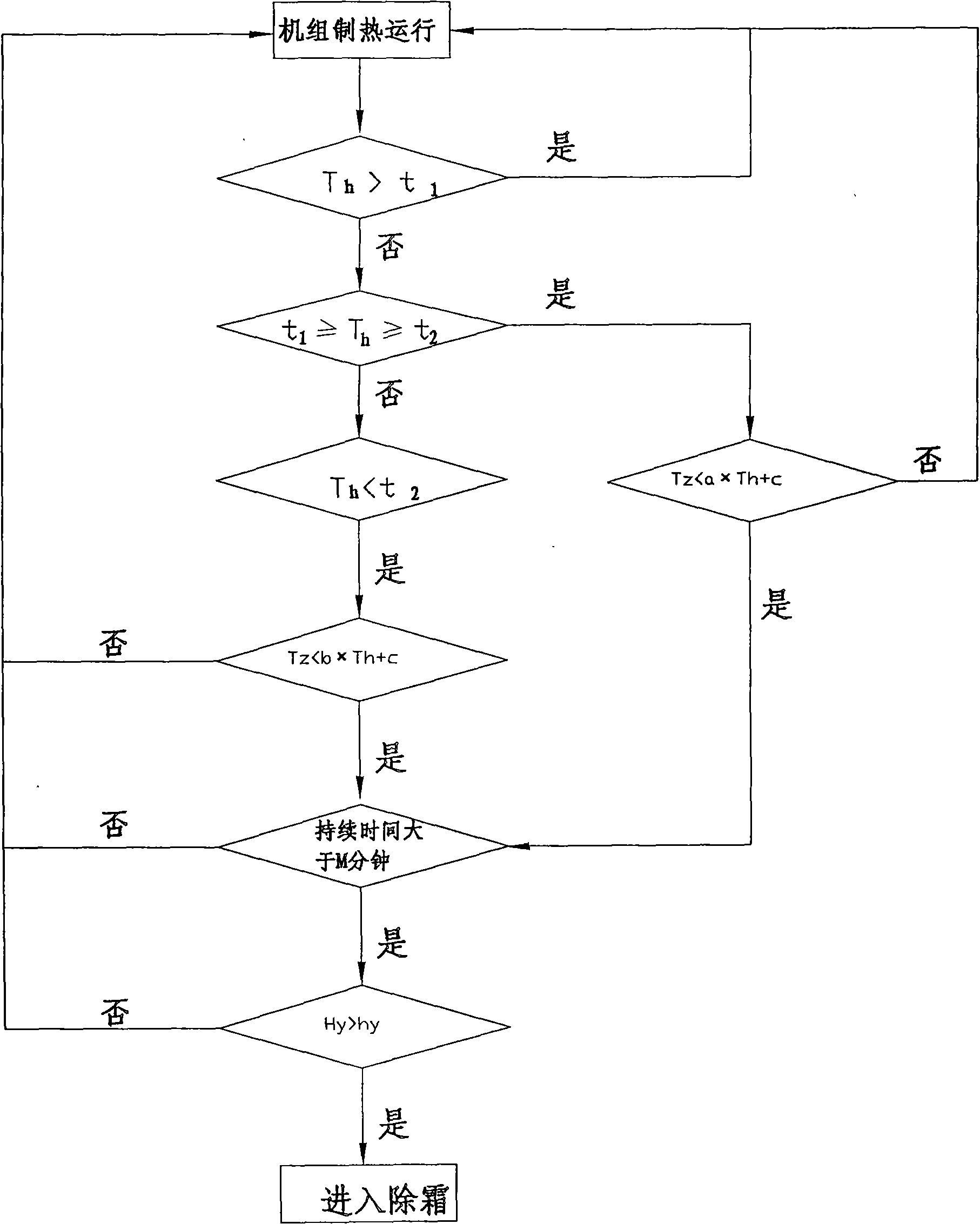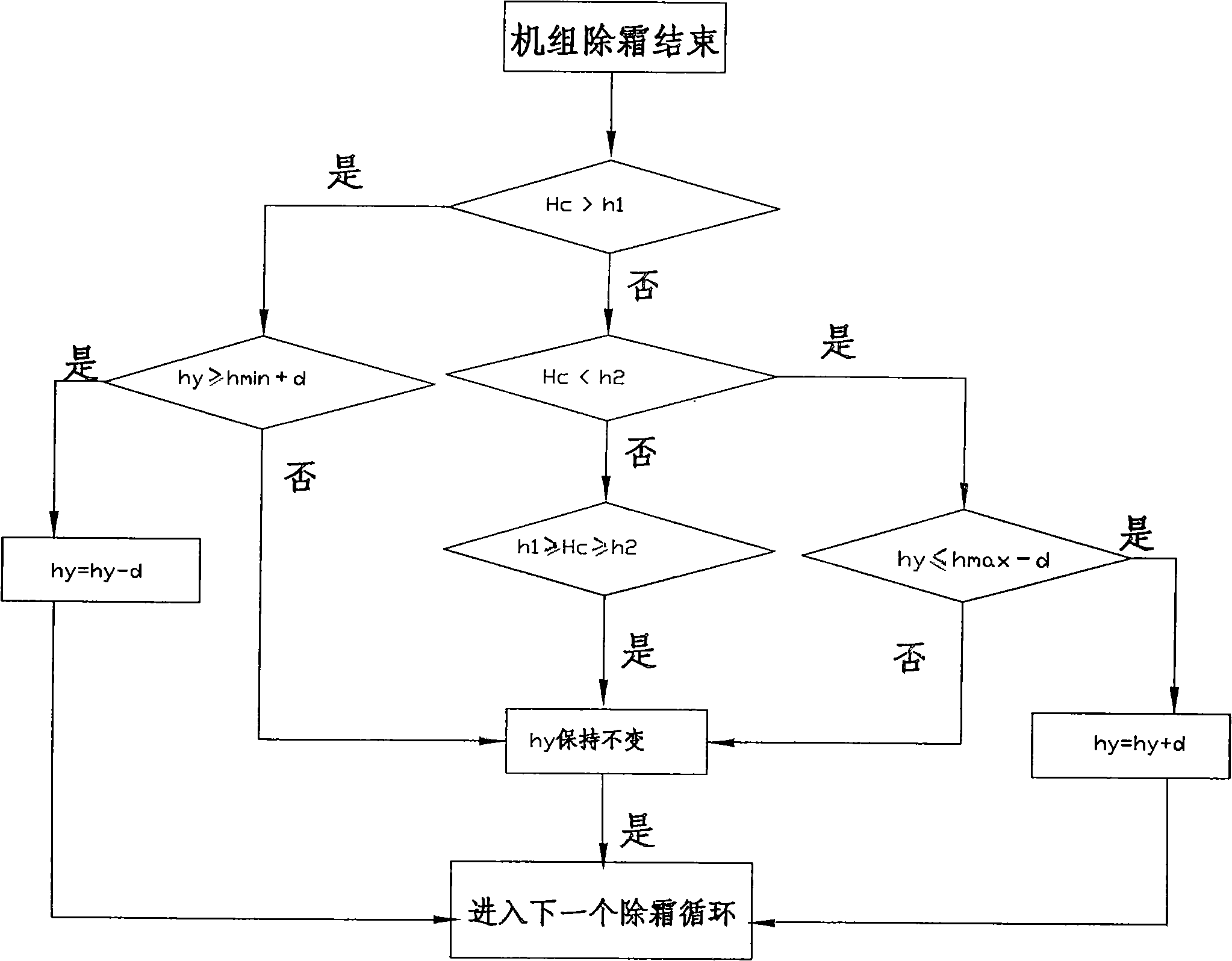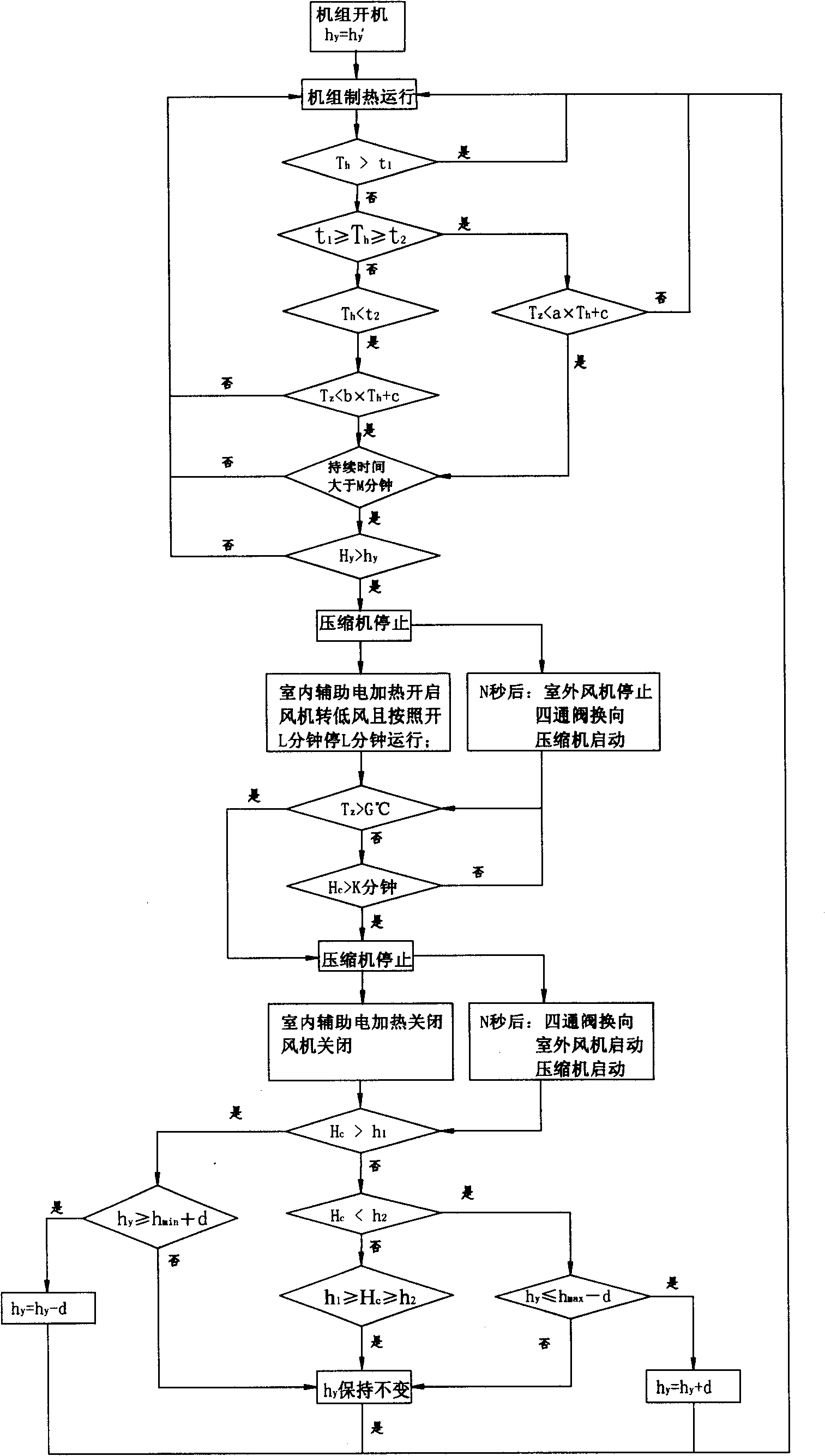Defrosting method for heat pump type air conditioner
An air conditioner and heat pump type technology, which is applied in the defrosting field of the heating mode of the air conditioner, can solve the problems of prolonged defrosting time, reduced heating efficiency, and increased defrosting time, so as to improve heating efficiency, ensure heating efficiency, reduce Effect of defrost time
- Summary
- Abstract
- Description
- Claims
- Application Information
AI Technical Summary
Problems solved by technology
Method used
Image
Examples
Embodiment Construction
[0032] The defrosting method of the heat pump type air conditioner of the present invention will be described in further detail below in conjunction with the drawings and specific embodiments.
[0033] Such as figure 1 , figure 2 , image 3 Shown.
[0034] Set the outdoor heat exchanger coil temperature T z And outdoor ambient temperature T h And actual heating time H y And set the heating time h y It is connected to determine whether to enter the defrost operation mode. According to the outdoor ambient temperature T h 、The temperature Tz of the central coil of the outdoor heat exchanger, the actual heating time H y , Defrost time Hc to defrost.
[0035] Set the following parameters:
[0036] 1. Temperature setting: environmental temperature judgment t 1 , T 2 And three constants a, b, c, defrost end temperature G:
[0037] Preferred: t 1 The range is 8℃~14℃; t 2 The range of is -2°C to 2°C; the range of a is 0 to 0.4; the range of b is 0.6 to 1; the range of c is -10°C to -6°C; ...
PUM
 Login to View More
Login to View More Abstract
Description
Claims
Application Information
 Login to View More
Login to View More - R&D
- Intellectual Property
- Life Sciences
- Materials
- Tech Scout
- Unparalleled Data Quality
- Higher Quality Content
- 60% Fewer Hallucinations
Browse by: Latest US Patents, China's latest patents, Technical Efficacy Thesaurus, Application Domain, Technology Topic, Popular Technical Reports.
© 2025 PatSnap. All rights reserved.Legal|Privacy policy|Modern Slavery Act Transparency Statement|Sitemap|About US| Contact US: help@patsnap.com



